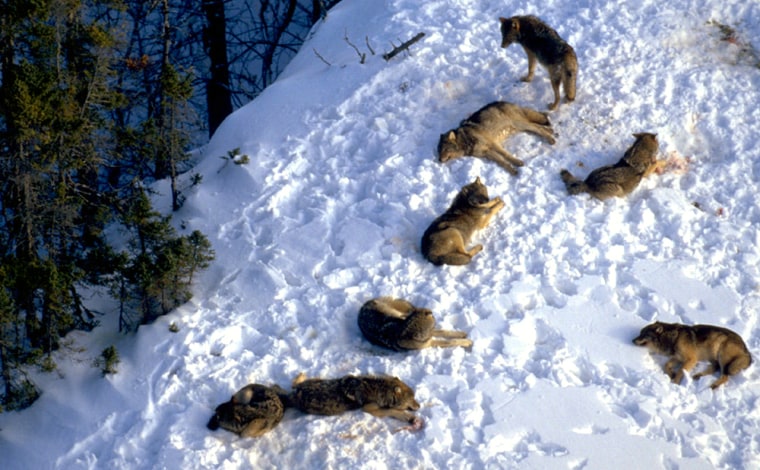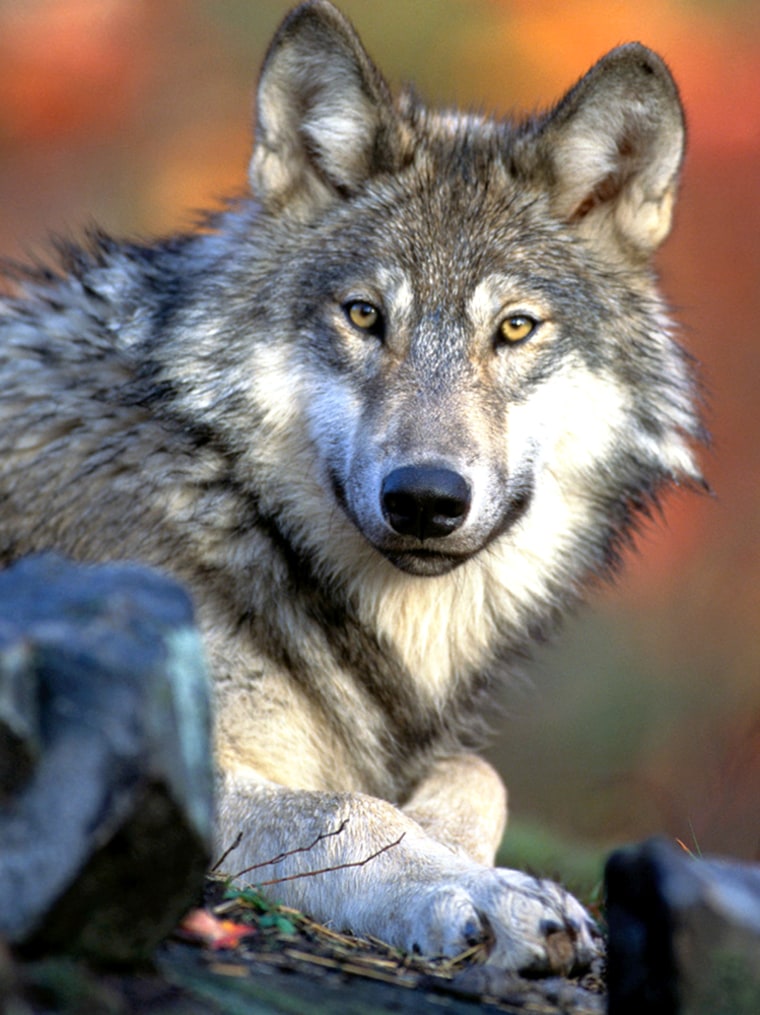The gray wolf, which once nearly disappeared in the lower 48 states, is making such a comeback that the Interior Department wants to lift federal protection for the animal in the eastern two-thirds of the country.
Interior Secretary Gale Norton on Friday announced a proposed rule that would lift protection under the Endangered Species Act for gray wolves in Minnesota, Wisconsin and Michigan, where there are significant populations, as well as in at least 20 other states. The proposal calls for states to assume management of the gray wolf populations in those states.
The rule change would include New England, where conservationists fear that loss of federal protection would hurt attempts to develop future wolf populations through migrations from Canada.
Norton made the announcement at a wildlife science center at Forest Lake, Minn., before traveling to a wildlife sanctuary in Wisconsin, where the wolves have been on the rebound as well. Minnesota has the largest gray wolf — also known as timber wolf — population in the United States outside of Alaska where the animal has never been in need of protection.
Norton said Friday marked the start of a four-month public comment period on the rule. Public meetings will be held across the region, and Norton said to expect her department to issue its final rule late this year or early next year. She added that she expects environmental groups will sue to block the change.
'Dramatic' recovery cited
The proposal calls for taking the gray wolf, which was close to extinction in the lower 48 states in the 1950s, out from under the Endangered Species Act umbrella in Minnesota, Wisconsin and Michigan where the wolf population has grown from a handful to more than 3,200 animals.

“The recovery of wolves has been dramatic,” Norton said in remarks prepared for the announcement. The Endangered Species Act is managed by Interior’s U.S. Fish and Wildlife Service.
Assuming the change is made final, the wolves in the “eastern population segment” — an area from Maine to the Dakotas — would be removed from the endangered species list.
“We believe this population of gray wolves no longer needs to come under the Endangered Species Act,” said Norton. The proposal calls for states to assume management of the gray wolf populations in those states.
Activists see 'shortsighted' move
Conservationists acknowledged that the revival of the gray wolf in Minnesota, Wisconsin and Michigan is a tale of ecological success.
But the Sierra Club said most states have weak protections for the wolves, and called the proposal a case of "snatching defeat from the jaws of victory."
"Wolves in Minnesota have thrived under federal protection, proving that the Endangered Species Act works," Ginny Yingling, a member of the Sierra Club's national working group on wolf issues, said in a statement. "They've reached a point where they ought to be delisted, but the state's proposed management plan for our wolves amounts to little more than open season. It simply is not safe to turn over management of our wolves to the state."
Others called the Interior proposal “shortsighted” because it also removes all protection for the wolf in New England where — especially in Maine — there has been hope the wolf population would re-emerge, migrating in from Canada.
“Wolf recovery in the Great Lakes represents a tremendous wildlife success story,” said Larry Schwieger, president of the National Wildlife Federation. “But the Fish and Wildlife Service should not abandon efforts to recover the wolf in the Northeast.”
Under the proposed rule, in regions such as New England it would be up to the states to try to reintroduce gray wolves if they desire future populations. Officials and farmers in some states have voiced concerns about wolves harming local economies.
"We chose a path that had recovery as its ultimate goal," noted Craig Manson, an assistant secretary of the interior, "but we used the flexibility under the Endangered Species Act to accommodate the needs of people who are most affected by the wolf's comeback."
Two years ago, the Interior Department upgraded the wolf from endangered to threatened everywhere in the lower 48 states except for the Southwest where a subspecies, known as the Mexican gray wolf, has been struggling to recover.
Still 'threatened' in the West
The latest action for the time being would continue the “threatened” designation for gray wolves across the West including in Wyoming, Idaho and Montana where wolves were reintroduced in the mid 1990s under a federal program at Yellowstone National Park. The wolf would remain endangered in the Southwest.
Virtually extinct in the lower 48 states some 40 years ago, today there are more than 2,450 wolves in Minnesota and nearly 800 in Wisconsin and Michigan. The reintroduction program at Yellowstone has produced hundreds of the wolves in Wyoming, Idaho and Montana.
Historically, the gray wolf’s range stretched from Canada to Mexico including most of the United States.
Although now limited to less than 5 percent of its original range, the recovery program of the gray wolf has been compared to the successful revival under the Endangered Species Act of the bald eagle, the American alligator and peregrine falcon.
The Fish & Wildlife Service is taking public comments on the proposed rule via e-mail to egwdelist@fs.fed.us. It also has background on gray wolves and the proposal at midwest.fws.gov/wolf.
